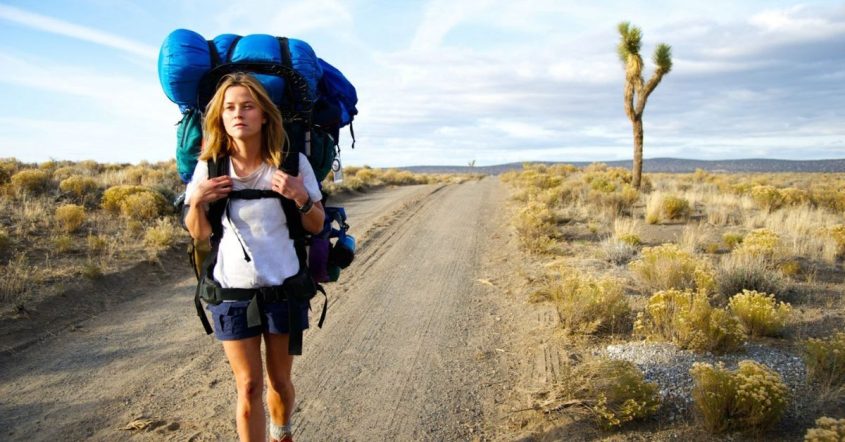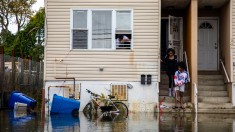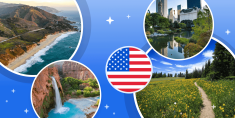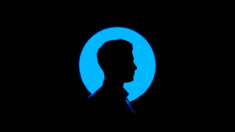“How was your trip?” is one of the most common and polite questions people ask after you return from traveling. Whether it was a weekend getaway, a business trip, or a month-long vacation, people naturally want to know how your experience went. But what seems like a simple question can sometimes feel complicated to answer.
Do you keep it short and say, “It was great”? Do you dive into every detail about where you went, what you saw, and who you met? How do you know how much is too much to share?
In this article, we will explore how to answer this question in ways that are not only appropriate but also engaging and memorable. You’ll discover various reply styles, how to match your answer with your audience, and simple techniques to keep the conversation flowing naturally. Whether you’re replying at work, among friends, or in a social media post, this guide will help you create thoughtful and meaningful responses.
The Spectrum of Reply Styles
Your answer to “How was your trip?” can fall into different categories depending on how much you want to share and who you’re talking to. Each reply style has its own value.
Polite and Brief
This is the most basic form of response. It is usually used when someone asks you in passing or out of courtesy. The goal here is to be polite but not necessarily detailed.
Examples:
- “It was great, thanks!”
- “Really relaxing, just what I needed.”
This kind of response is perfect for colleagues, casual acquaintances, or anyone you don’t know well. It keeps the interaction friendly without taking too much time.
Specific and Engaging
This type of reply offers more detail, which makes it feel personal and memorable. Instead of giving a general answer, you highlight one or two moments that stood out to you.
Examples:
- “It was amazing! I finally saw the Northern Lights in Norway.”
- “I visited an elephant sanctuary in Thailand and even got to help bathe one.”
Such replies can spark curiosity and lead to deeper conversations. They show that you’re open to sharing, but you’re also selective and thoughtful.
Complete and Candid
A full and honest answer often includes both the highlights and the challenges. This is the best type of reply when you’re speaking with someone you trust and who genuinely wants to hear the whole story.
Examples:
- “It was incredible overall. We got caught in a monsoon one day, but we still managed to explore beautiful temples and try some amazing local food.”
Being honest about both the fun and the struggles makes your story more authentic and relatable. This reply works well with close friends, family members, or fellow travel enthusiasts.
Tailoring Your Response to the Audience
Not all listeners want the same level of detail. Knowing who you’re talking to helps you decide how much to share. Let’s look at how you can adjust your response depending on your audience.
Casual Acquaintances or Coworkers
In most workplace environments or casual social settings, a short, cheerful response works best. People may ask out of politeness, but they usually don’t expect a long explanation.
Example:
- “It was a great trip, very relaxing. I feel recharged.”
You can also add a brief extra sentence if they seem curious:
- “We visited the mountains, so peaceful up there!”
Close Friends or Family
When talking to people who care about you personally, feel free to be more open. They usually want to hear how the trip made you feel, what surprised you, and any special moments you experienced.
Example:
- “It was the best vacation I’ve ever had. I swam in crystal-clear lagoons, took a cooking class, and even made friends with some locals.”
They may also ask follow-up questions, so be ready to share more details, especially if they have a personal interest in travel or the place you visited.
Fellow Travelers or Travel Enthusiasts
People who love traveling will be naturally curious about your itinerary, the culture, food, and any unique experiences you had. This is your chance to share specific highlights, tips, and even funny or challenging moments.
Example:
- “It was a wild ride. I trekked the Inca Trail and got altitude sickness halfway through, but reaching Machu Picchu made it all worth it.”
These audiences will appreciate the nuances and are more likely to share their own experiences in return.
Building Your Reply: A 3-Step Formula
To make your reply more meaningful and structured, you can follow this simple formula:
Step 1: Start with a General Impression
Begin your reply with a sentence that gives an overall idea of how the trip went. This sets the tone for the conversation.
Examples:
- “It was one of the most inspiring trips I’ve ever taken.”
- “It was exhausting, but totally worth it.”
Step 2: Add One or Two Memorable Moments
Rather than listing every place you visited, pick one or two stories that highlight the experience.
Examples:
- “I went scuba diving for the first time and saw sea turtles swimming by.”
- “One night, we got lost in Venice and ended up discovering a hidden jazz club.”
These specific details make your reply feel personal and help the listener visualize your experience.
Step 3: Invite Engagement or Shift Back to Them
Wrap up your reply by turning the conversation back to the other person. This keeps the interaction balanced.
Examples:
- “Have you ever been to Greece?”
- “What have you been up to lately?”
This step helps you avoid dominating the conversation and shows that you’re also interested in their life.
Common Pitfalls to Avoid
While replying, it’s helpful to avoid a few common mistakes:
Giving Too Much Detail
It’s easy to get carried away and start explaining your full itinerary. But most people aren’t looking for a travel diary.
Tip: If they want to know more, they will ask. Keep your initial reply focused and concise.
Only Focusing on the Negative
Even if parts of your trip were disappointing, avoid turning your reply into a complaint session.
Better Approach:
- “We had a few rainy days, but we made the most of it and discovered some cozy cafes.”
This shows resilience and keeps the tone positive.
Being Too Vague
Simple replies like “It was fine” or “It was okay” don’t say much and can end the conversation quickly.
Tip: Add one interesting detail to make it more engaging.
- “It was okay, but the street food was unforgettable!”
The Psychology Behind Your Answer
Understanding why people ask about your trip can help you decide how to reply.
They’re Trying to Connect
People often ask, “How was your trip?” as a way to reconnect with you. They might have missed you or be genuinely happy to see you again.
They’re Interested in New Places
Some people are curious about travel, especially if they don’t get to travel often themselves. They want to hear about your experiences and imagine what it was like.
They’re Observing Your Mood
Your reply also helps them understand how you’re feeling post-trip. Are you relaxed, jet-lagged, excited, or nostalgic?
When you understand their motivation, you can frame your reply in a way that feels appropriate and genuine.
Transitioning Smoothly
After you finish talking about your trip, it’s a good idea to gently steer the conversation back to the other person or a different topic.
Ideas for Smooth Transitions:
- “That reminded me of something you told me last month. How did that go?”
- “Anyway, enough about me, how was your week?”
- “I think you’d love it there. Have you ever been?”
This makes the exchange feel mutual and shows that you care about their experiences too.
Beyond the Reply: Dealing with Post-Trip Emotions
After a great trip, you might come home feeling a bit low. It’s completely normal to experience what some call “post-vacation blues.”
Ways to Cope:
- Share your favorite memories: Talking about what you loved helps you relive the joy.
- Look through photos: Reminding yourself of the sights, people, and moments can lift your spirits.
- Write a travel journal: Documenting your trip helps you reflect and find closure.
- Start planning your next trip: Having something to look forward to is a powerful mood booster.
Also, be honest with yourself. If you’re not ready to talk about your trip, it’s okay to give a brief answer and wait until you feel more comfortable.
Conclusion
“How was your trip?” might seem like a routine question, but it can be an excellent opportunity to connect, share, and even inspire. By selecting the appropriate level of detail, incorporating a personal touch, and considering your audience, you can craft replies that feel thoughtful and engaging.
Remember the simple 3-step formula: give a general impression, share one or two memorable moments, and then guide the conversation smoothly. Avoid common pitfalls, such as over-sharing or being too vague. And most importantly, be genuine.
Your trip may be over, but your stories can continue to make people smile and spark meaningful conversations long after you’ve returned home.















